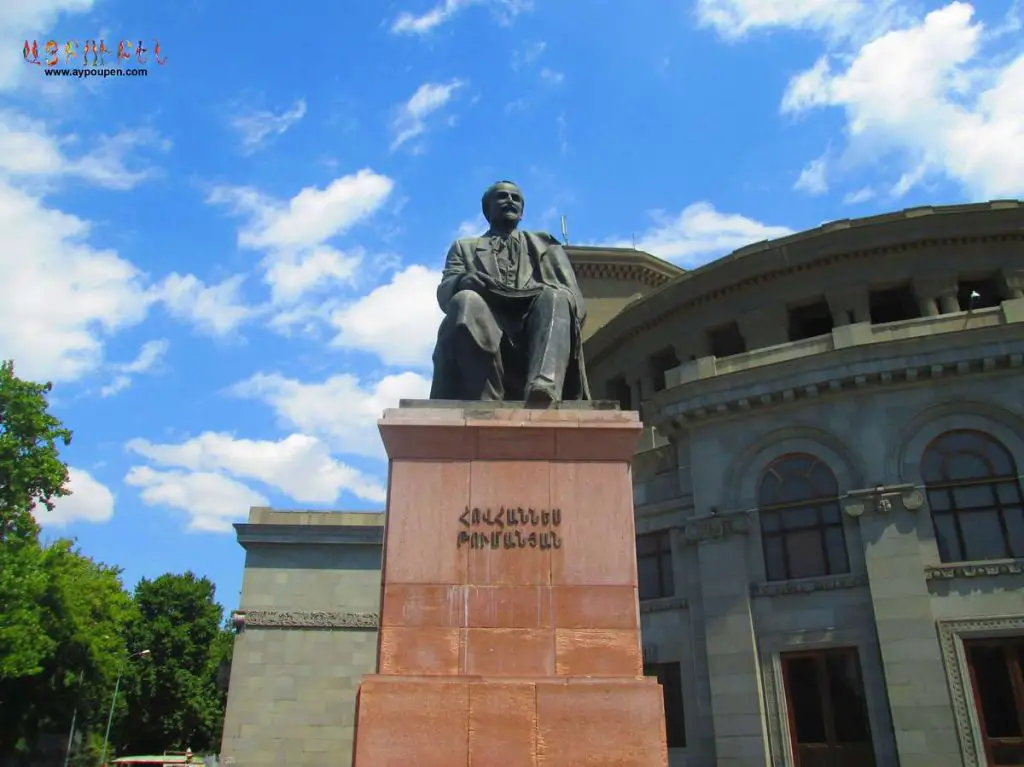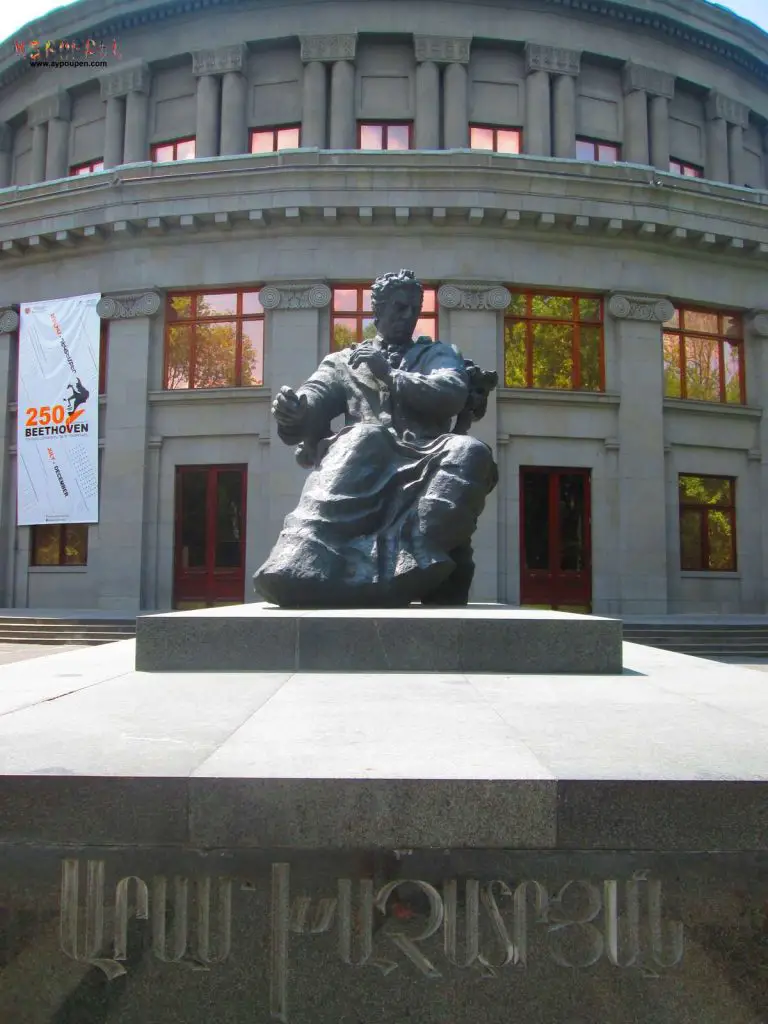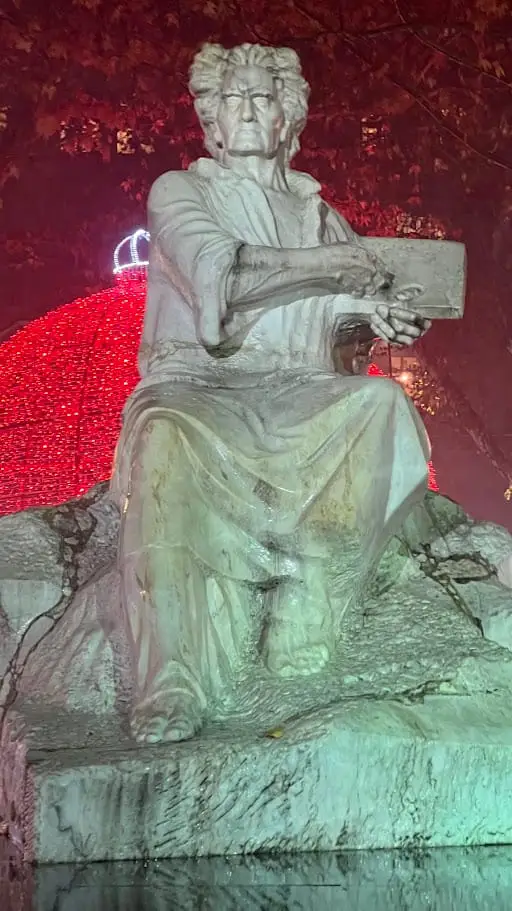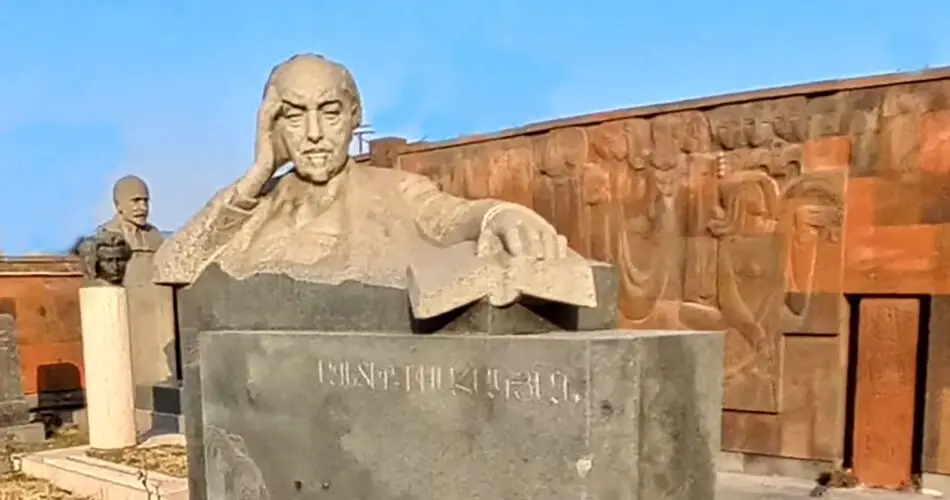Ever heard of Père Lachaise in Paris, where legends like Jim Morrison and Oscar Wilde rest? Well, Armenia has its own version: the Komitas Pantheon in Yerevan! It’s not just a cemetery; it’s a vibrant tapestry of Armenian brilliance, worth a visit especially during April, the month we remember the Armenian Genocide.
Just as Père Lachaise in Paris stands as a hallowed ground for French and international cultural giants, the Komitas Pantheon in Yerevan, Armenia, serves as a poignant testament to the nation’s rich heritage.
Let’s dive into why this place is so special and explore the Komitas Pantheon’s history, its significance, and why it should hold a sacred space in the hearts of Armenians worldwide.
From Cemetery to Sanctuary: The Genesis of the Komitas Pantheon
Imagine a simple cemetery turning into a national treasure. That’s the Komitas Pantheon’s story. Originally a simple burial ground, the “Mler” cemetery, that transformed into a national sanctuary in 1936, becoming the final resting place for Armenia’s cultural heroes.
This transformation was more than just a change in designation; it was a conscious effort to honor the nation’s cultural elite, starting with the burial of Komitas himself. Becoming the hall of fame, for souls that shaped a nation.
Komitas, the revered composer and musicologist, became the central figure, giving the pantheon its name and setting the tone for a place dedicated to Armenian genius. This location became a space to preserve national identity within a time of shifting political landscapes.
Echoes of Brilliance: The Cultural Icons of Komitas Pantheon
Like Père Lachaise, which houses the remains of artists like Jim Morrison and Oscar Wilde, the Komitas Pantheon is home to a constellation of Armenian stars. Here, you’ll find the final resting places of:
- Aram Khachaturian: The world-renowned composer whose music epitomizes Armenian spirit.
- William Saroyan: The literary giant whose words captured the essence of the Armenian experience. As per his wishes, he was cremated, half of the remains are in the Fresno Armenian Cemetery and the other half in Komitas Pantheon in Armenia.
- Avetik Isahakyan: The beloved poet whose verses continue to inspire generations.
- Sergei Parajanov: The visionary filmmaker whose art transcends cultural boundaries.
These individuals, among many others, have woven the rich tapestry of Armenian culture, leaving an indelible mark on the nation’s identity.



A Source of National Pride: Why These Figures Matter to Armenians
These individuals are not just figures from the past or just historical footnotes; they are integral to the Armenian narrative.
In a nation with a history of resilience, their contributions have enriched the nation’s cultural landscape, providing strength and inspiration, especially during challenging times. They remind us that even in the face of adversity, creativity and spirit thrive.
In a nation that has endured immense hardship, their legacies serve as a beacon of resilience, hope and creativity. Their work is a testament to the enduring spirit of the Armenian people, a source of immense pride and a reminder of their cultural richness.
April’s Revival Pilgrimage: Remembering Genocide Amidst Cultural Legacy
The month of April holds profound significance for Armenians, marking the commemoration of the Armenian Genocide of 1915. Visiting the Komitas Pantheon during this time is a powerful experience, it is not merely a tourist activity; it’s a pilgrimage.
It’s an opportunity to pay tribute to the resilience of the Armenian spirit, a spirit that survived and flourished despite unimaginable atrocities. It’s a chance to connect with our roots, remember those we lost, and to honor those who survived.
It’s a blend of mourning and celebration, a moment to feel the weight of history and the strength of our culture. Standing amidst the graves of these cultural icons, one feels a powerful connection to the nation’s past, present, and future. The Pantheon becomes a place of mourning and celebration, a place where grief and pride intertwine.
A Must-Visit for Every Armenian and Tourist: Experiencing National Heritage
For every Armenian tourist interested in Armenian culture, a visit to the Komitas Pantheon is essential. It’s a chance to walk in the footsteps of giants, to experience the depth of Armenian artistic and intellectual achievement. The adjacent Komitas Museum-Institute further enhances this experience, providing a deeper understanding of Komitas’s life and work.
By visiting this site, one participates in a living tribute to the enduring legacy of the Armenian people, a legacy that continues to inspire and resonate across the globe. It is a place that brings to life the stories of those who built the Armenian identity, and a place to honor their memory.
Your Must-Visit Guide: How to Get There and Why It’s Worth It
- Location: The Komitas Pantheon is located in the Shengavit District of Yerevan, along Arshakunyats Avenue.
- How to get there: You can easily reach it by taxi or public transportation. Many buses and minibusses go along Arshakunyats Avenue. Yerevan’s metro system also has stations located near the pantheon.
- Why visit? It’s a chance to walk among legends, to feel the pulse of Armenian culture. Plus, the Komitas Museum-Institute next door offers an even deeper dive into Komitas’s life and work.
- For students: this location is an amazing place to learn about armenian culture, and to see the graves of the people who shaped the armenian identity.
More Voices of Armenian Excellence
The Komitas Pantheon is a repository of Armenian cultural and intellectual achievement, housing the remains of individuals who have profoundly shaped the nation’s identity following the Armenian Genocide. Beyond the well-known names, the pantheon also honors:
- Hovhannes Shiraz (Poet, 1914-1984): A master of Armenian poetry, his verses are filled with national pride and deep emotion.
- Sos Sargsyan (Actor, 1929-2015): A titan of Armenian theater and cinema, his performances left an indelible mark on the nation’s artistic landscape.
- Hrant Shahinyan (Gymnast, 1923-1996): An Olympic gold medalist, his athletic prowess brought glory to Armenia and inspired generations.
- Vagharsh Vagharshian (Actor, Director, Playwright, 1894-1959): A prominent figure in Armenian theatre, contributing immensely to its development.
- Grigor Hakhinyan (Sculptor, 1926-2005): A renowned sculptor, his works are a testament to Armenian artistic talent.
- Eduard Isabekyan (Painter, 1914-2007): A celebrated painter, his canvases depict the beauty and history of Armenia.
- Silva Kaputikyan (Poet, Writer, Activist, 1919-2006): A powerful voice in Armenian literature, her works often reflected national concerns.
- Gevorg Emin (Poet, Writer, Translator, 1919-1998): A distinguished poet and writer, his works are considered significant contributions to Armenian literature.
- Alexander Shirvanzade (Playwright, Novelist, 1858-1935): A very important novelist and playwright, who’s work has been translated into many languages.

